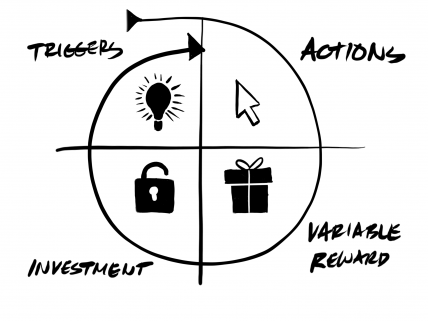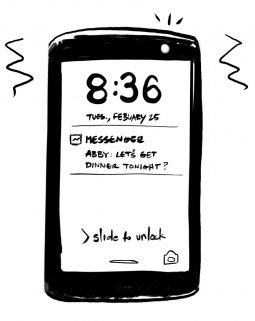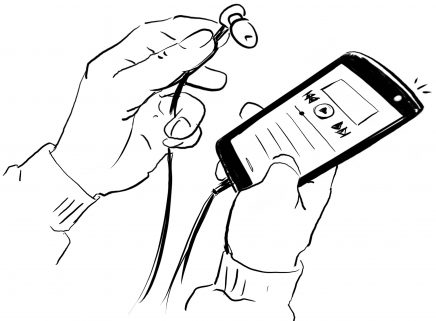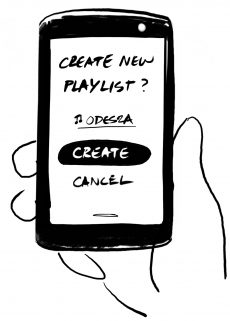
Ever wonder what is going on through people’s minds as they mindlessly glance at their screens? How about yourself? Are you aware of what you are doing when you are glued to your screen, checking notifications, responding to emails, double-tapping photos of your friends? Rinsing and repeating throughout the day till you’re suddenly in bed only to wake up the next morning to do it all over again.
Hooked demystifies your addiction to the products you use. In this easy-to-read book about habit-forming products, Nir Eyal introduces the “Hook Model,” which he breaks down into 4 easy-to-understand phases: Trigger, Action, Variable Reward, and Investment.
First, let’s define what a habit is before we go into how to create one. A habit is a behavior that is done with little or no conscious thought. Creating a habit requires a certain frequency of how many times the Hook Model is repeated, also known as cycles.

Triggers come in two forms, external and internal. External triggers are simple to understand, they are visual cues, sounds, a vibration from your device, sensations that get your attention and cause you to react. Internal triggers are causes that are from within person’s self, usually thoughts or emotions. And just as the term trigger describes, it initiates an action, or an “itch” as the book refers. Commonly, a negative emotion or discomfort that needs instant relief serve as the best trigger.
Example: When there is a lack of audio stimulation on your commute to work, you might reach for your car stereo or earplugs if you’re taking public transportation.
The silence triggered an itch. The lack of auditory stimulation can make the commute seem longer, difficult to endure its entire duration.
Action is what a user can do to relieve the “itch.” The action has to be simple enough and does not require too much effort to perform. In the case of the example above, turning on the car stereo or turning on your favorite streaming service, like Pandora or Spotify, would be really simple. According to Dr. B.J. Fogg’s Behavior Model, this simple action addresses one of three Core Motivators, seeking the pleasure of listening to your favorite tunes and avoiding the pain of sitting in boring silence. Other core motivators include; seeking hope and avoiding fear and seeking social acceptance while avoiding social rejection.

The ability to perform this action is simple, doesn’t cost the user any money, require them to learn anything new and isn’t too far from their regular routine already. This is all ideal if the product is meant to get the user to re-enact this action the next time they come across the same trigger.
Variable reward is the outcome to performing those actions. It has to be rewarding enough to scratch the “itch” as well as be spontaneous enough to encourage the user to do it again.
Listening to your favorite radio station might not seem like anything that could contribute to how hooked a user gets, but every song that comes on, and the next after that, the user is getting a small pleasant surprise, another song that they might like. The important part is that it’s not always predictable. That small variable of not knowing what the next song will be is enough to keep a user listening and anticipate the next song.
Investment is a bit more difficult to understand, it’s what a person is putting into the loop that causes the user to come back. In order for the loop to hook a person into repeating the process, they have to invest some thing, usually time or money.
When the user is listening to their songs on services like Pandora or Spotify, they are prompted to interact by “liking” or adding those songs to playlists. They’re also given the ability to subscribe to their favorite artists. Minor interactions like that are considered investments. In this case, the efforts of investing time to make the listening experiences better is what the user has put into the loop.

How does this contribute to the Hook Model? That small investment of time and effort into adding a song to your playlists or subscribing to a radio station, creates a want to see the outcome the next time you come to use the service. Will the station play some more songs that the user likes? Or will they be exposed to something they Have never heard of, happily surprised by a new song or artist? Only way to find out is to return to the service and listen to find out.
The more the loop repeats for a user, the more likely the action becomes a habit.
The book goes over how a habit can easily become an addiction in a short segment called “vitamins vs. painkillers.” I will go into that in another post.